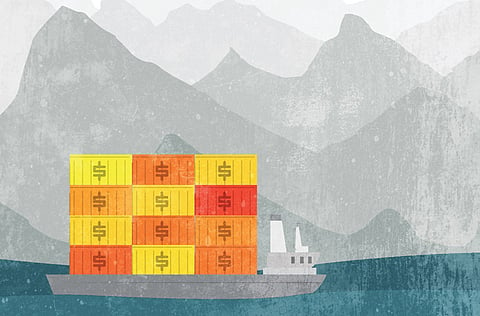How the US ended up exporting inflation
China’s was the only economy not to get burdened by this unwelcome entry

I am constantly fascinated by the whole dilemma of dealing with currencies, their values, and the effect of their appreciation or depreciation on countries and their economies.
The main concern that haunted central bankers was always on what is the right value of a country’s currency, and thereon everything else the country provides in terms of products or even services. The impact of such a delicate issue extends to every corner of the country, affecting everyone holding that currency in a bank, in an asset, or even under the mattress.
Throughout the article, this is one of the key things I will discuss, even if only partially. And now back to the million-dollar question; what is the right value of a currency?
For purposes of illustration, let’s take into consideration the US’ Quantitative Easing (QE) programme.
To many, and in the early stages of the programme, the belief was in how hard the US was trying to provide economies, especially emerging ones, with the cash most needed to end a long suffered recession.
The $85 billion a month purchase of bonds back by the Federal Reserve, directly and indirectly, was supposedly allowing breathing space for suffocating economies. Truth is, that wasn’t the case.
With interest rates close to zero in the US, attracting investments was such a tough task, especially with the much cheaper cost of production in emerging economies, and most of all in China.
On the other hand, interest rates could not be raised so that people won’t be encouraged to save but rather to spend and get the economy moving. Technically, interest rates were negative if you took inflation into account.
But if more people were being laid off and fewer people spending, others who could spend were worried of letting go of the money. With negative rates, people would rather stash their cash at home than deposit it in a bank that provides no real return and is subject to default anyway; so what can be done?
The answer was QE. If the US cannot increase rates and cap inflation, it still needed to print money that will keep pushing inflation up only if it’s circulated in the economy. There was no solution but to find a way to move this printed money out.
So came the launch of the QE programme. Emerging economies receiving dollars printed more of their currencies, which circulated in their own economies and pushed inflation up.
The decrease in a currency’s worth and the increase in prices made sure that products and services provided by the US economy were competitive to those of economies affected by the QE programme. And the US started selling again.
In other words, US exported its own inflation to get its own economy moving. As for China, and since the yuan is pegged to the dollar, this was simply unacceptable. As more dollars were received, China printed more yuan.
The catch here is that China controlled these from moving around by accumulating them and investing them abroad.
Whether through its sovereign wealth fund, SAFE, or by investing in US Treasuries, China has not only guaranteed a better future for its generations but also guarded itself from the type of inflation it doesn’t want running around freely. Especially with its export-based economy, this is crucial.
As for the US, it would rather want consumption to be domestic by diluting the dollar’s value. All in all, the US is making its exports cheaper, its local products relatively less expensive by exporting inflation, and is promoting spending and local consumption by keeping rates close to zero.
This, eventually, increases ‘Money Velocity’ — the number of times dollars exchange hands. The latter as well as the increase in money supply, with inflation being exported, made the perfect combination for growth in the US.
Since no one is questioning how much printing is taking place, and the Chinese are keeping more than 50 per cent of their holdings in the US anyway, it’s all good.
The thought I want to leave you with is this: Wouldn’t it have been better for the US to bail out its citizens rather than failed banks and financial institutions?
— The writer is a commercial consultant and a commentator on economic affairs. You can follow him on Twitter at www.twitter.com/aj_alshaali.
Sign up for the Daily Briefing
Get the latest news and updates straight to your inbox



